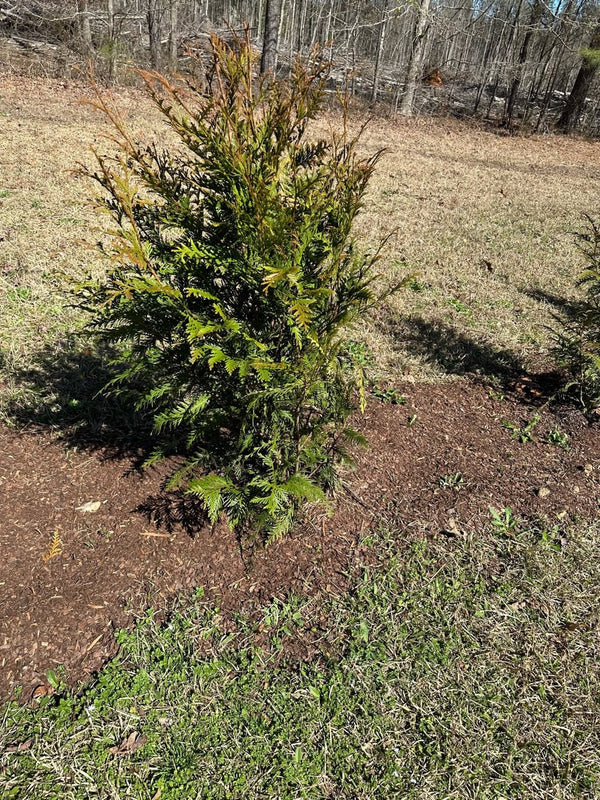The Thuja Green Giant, scientifically known as Thuja standishii x plicata, is a remarkably robust and rapid-growing evergreen tree that has earned its place in the hearts of gardeners and landscapers worldwide. Renowned for its versatility and hardiness, the Thuja Green Giant is often employed as an ideal choice for creating privacy screens, windbreaks, or simply as a stunning standalone feature in a spacious garden. However, as resilient as these trees might be, providing them with optimal growth conditions can significantly enhance their health, growth rate, and overall appearance.
One crucial aspect often overlooked by aspiring green thumbs and seasoned horticulturists alike is the importance of understanding the tree's preferred soil conditions. And while Thuja Green Giants are rather forgiving when it comes to soil tolerance, knowing the ideal soil type, pH, drainage, and fertility conditions can lead to thriving, vibrant trees that enhance the aesthetics of your landscape while serving their intended purpose efficiently.
| Soil Parameter | Ideal Range | Notes |
|---|---|---|
| Soil Type | Loamy | Though loamy soil is preferred, these trees can also tolerate clay and sandy soils. |
| Soil pH | 5.5 - 7.0 | This pH range ensures optimal nutrient availability. The trees can tolerate slightly alkaline conditions. |
| Drainage | Well-draining | Adequate drainage is crucial. Overly waterlogged or soggy conditions can lead to root rot. |
| Fertility | High in Organic Matter | While not heavy feeders, these trees appreciate soil rich in organic matter. Amend with compost or well-rotted manure as needed. |
Keep in mind that while these are ideal conditions, Thuja Green Giants are known for their adaptability. Even if your soil doesn't perfectly meet these conditions, with some care and soil amendments as necessary, you can still successfully grow these resilient trees.
Understanding Soil Types
The perfect starting point when preparing for your Thuja Green Giants is getting acquainted with the soil types that these trees prefer. Loamy soil is the most favored, offering a well-balanced mix of sand, silt, and clay. This balance ensures good water retention while avoiding waterlogging, providing an ideal medium for root expansion and nutrient absorption.
However, one of the Thuja Green Giant's charms is its adaptability to various soil types. They can still perform well in sandy soils, which drain quickly and are often low in nutrients, and clay soils, which tend to hold onto water longer and can sometimes become compacted. If you find your garden falls into the sandy or clay extremes, don't despair. It simply means you might need to put in a little more effort to amend your soil conditions for the best results.
Maintaining Ideal Soil pH
Another key aspect that influences the well-being of your Thuja Green Giants is the soil pH level. These trees typically prefer neutral to slightly acidic soil conditions, with the ideal pH ranging from 5.5 to 7.0. This range is fairly standard for many plants, ensuring that nutrients are readily available and can be easily absorbed by the plant's roots.
That said, the Thuja Green Giants' tolerance extends to slightly alkaline conditions as well. However, if your soil's pH strays too far from the preferred range, adding specific soil amendments like lime (to raise pH) or elemental sulfur (to lower pH) can help bring things back to balance.
Ensuring Proper Soil Drainage
Regardless of the type or pH level, all soils must provide adequate drainage for Thuja Green Giants. While these trees can handle some moisture, they do not fare well in overly waterlogged or soggy conditions, which can lead to the dreaded root rot.
To check your soil's drainage, dig a hole about one foot deep and fill it with water. If the water drains within an hour or so, your soil's drainage is probably adequate. If it takes significantly longer, you might need to improve drainage. Adding organic matter or sand can improve soil structure and drainage, but in severe cases, you might need to consider installing a drainage system or planting your trees in a raised bed.
Optimizing Soil Fertility
Lastly, let's touch upon soil fertility. Thuja Green Giants appreciate nutrient-rich soil. Although they are not heavy feeders, providing a soil rich in organic matter will support their vigorous growth.
A simple way to enhance soil fertility is by adding a layer of compost or well-rotted manure to the planting site. This organic matter will slowly break down over time, releasing nutrients into the soil that your trees can utilize. Plus, it improves soil structure and water-holding capacity, particularly beneficial in sandy soils. For an extra boost, consider a balanced slow-release fertilizer in spring, following package instructions to avoid over-fertilizing.
In conclusion, remember the importance of mulching around the base of the tree. Mulching can conserve moisture, moderate soil temperature, and suppress weed growth, all while adding a neat, finished look to your planting area.
The Thuja Green Giant's adaptability and hardiness make it a favored choice among many gardening enthusiasts. Still, as with all living things, providing optimal conditions can only serve to enhance their growth, health, and beauty. With a good understanding of your soil and how to optimize it, you're well on your way to creating a lush, green, and private space you'll love. Happy gardening!

